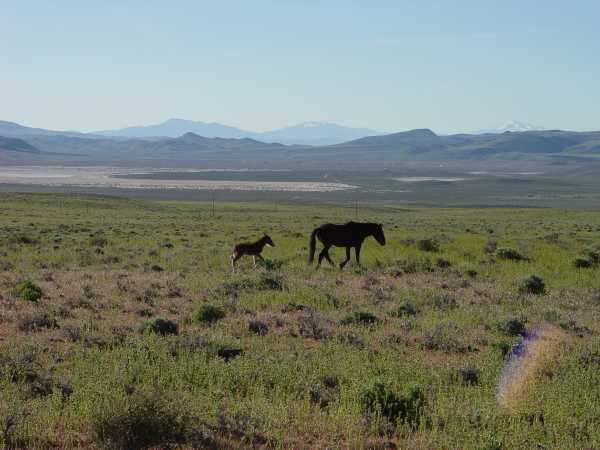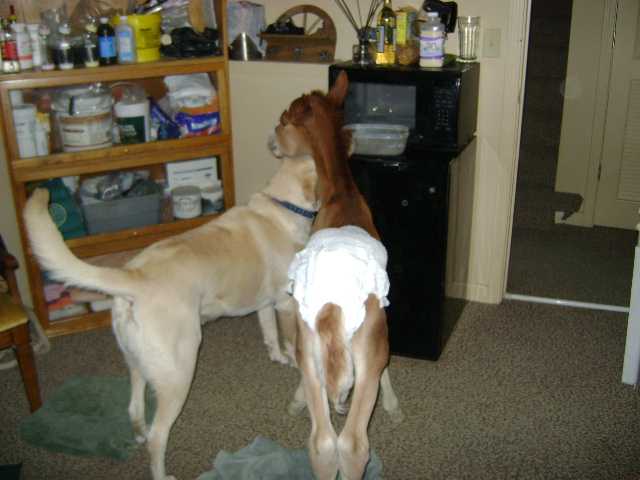LARGE ANIMAL RESCUE SKULL SESSION
|
RESCUE OF LITTLE IRON MAN
HOW THE INCIDENT WAS RESOLVED |
|
This problem is based on a real scenario and is presented for a "Skull Session" discussion in the Technical Large Animal Emergency Rescue Facebook Group.
Location Iron Mountain area in Nevada's Virginia Range. Date and Time Call received around dark. Response initiated next morning in early light. Incident Details Hikers found a dead mare (later determined to have died from natural causes) along with a stallion and a foal that was just a few days old. The foal was too young to survive so the state brand inspector authorized the foal to be picked up.
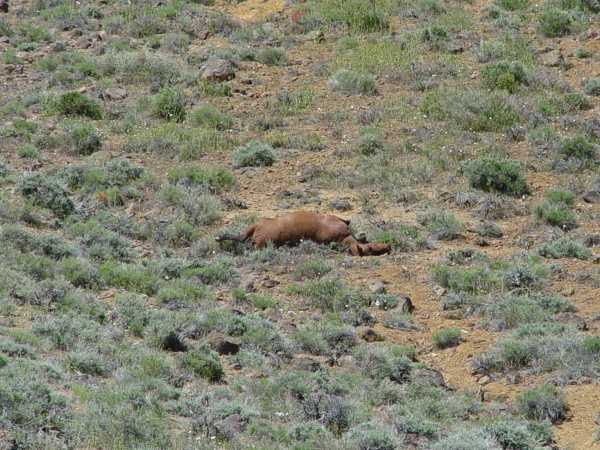
Resources available include a rescue trailer, six volunteers and an experienced rescue horse with rider. The incident has occurred on open wild horse range that consists of many square miles where access is difficult. Your objective is to locate the foal, safely remove it and bring it to the foal care center.
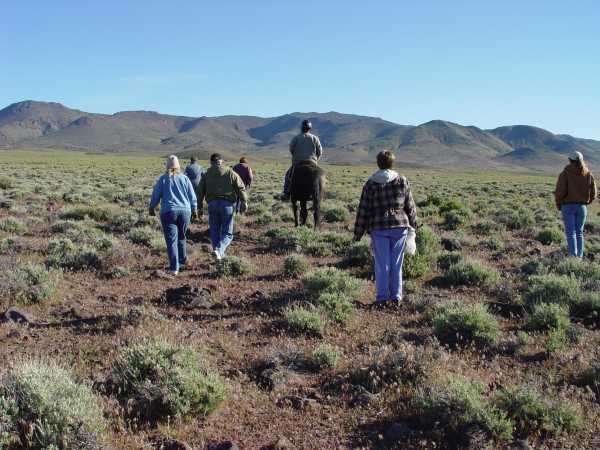
Skull Session Questions
Group Feedback Here is a compilation of the group's input. Safety is the first priority, for the responders, horse and rider, and for the foal. Locate the foal and separate the foal from the stallion. He is probably a bit weak so he won't likely travel too far. Bring GPS so the rest of the rescuers can locate the foal once he is spotted. Bring nursing bottle with electrolytes and first aid supplies. Bring corral panels and/or construction netting if feasible for containment. Drive the foal and stallion if necessary toward the area where the trailer is staged. Horse and rider should use indirect pressure once the foal and stallion are spotted to reduce the chance of a stallion charge or the foal getting injured. Get the foal to "join up" with the horse and rider. (Note: "Join up" was the key point in resolving this rescue.) Get the foal in the trailer and keep an eye out for the stallion in the event he charges the volunteers.
Volunteers went out at first light and located the foal. The trailer and rescue horse were brought out onto a jeep trail as close to the foal as possible. The horse and rider ("Corey" and I) trailed the foal and stallion until the foal fell behind. Then we quietly eased up on and walked beside the foal. When the foal finally stopped alongside the saddle horse, I dropped a lariat loop over the foal's head.

You need a really solid horse for this operation as the foal decided to circle Corey, drawing the lariat around his legs. Foals are delicate subjects so we needed to confine him, but not drag him about. (I was prepared to drop the rope if Corey got anxious.) Next the volunteers quietly approached the three of us and unwound the rope.

We then walked the foal toward the jeep road with the horse nearby and a couple of people behind him to encourage him to move forward.

We would occasionally rest the foal to reduce stress.
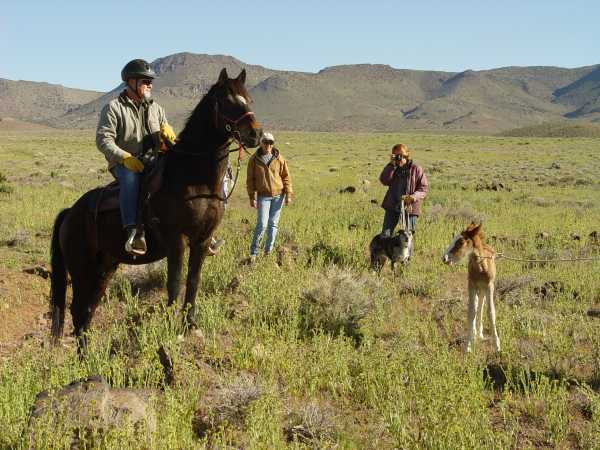
We rested again waiting for the trailer.
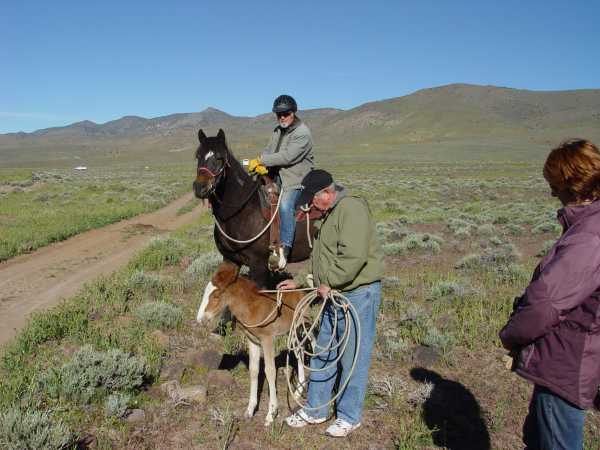
Shirley spent some time with him in the trailer until he felt comfortable.
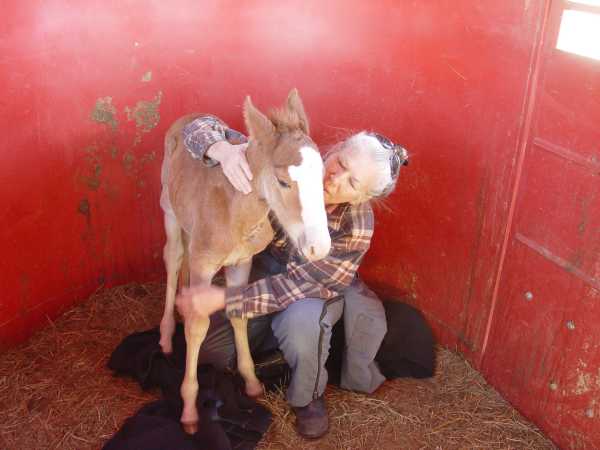
Forlorn stallion, but he didn't charge.
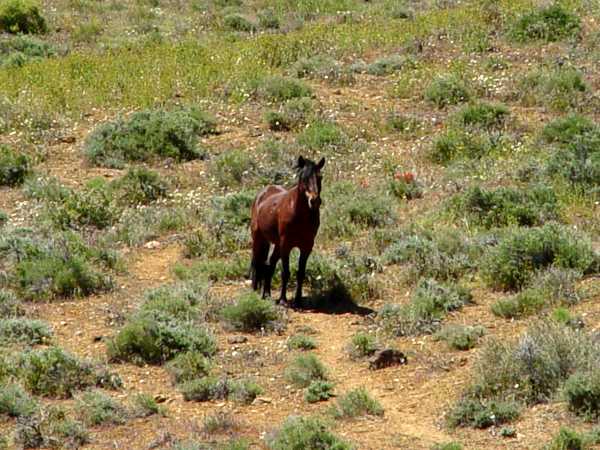
After getting a dose of electrolytes, mare's milk replacer, etc., the little horse was tired and napped for a while. Then it was off to investigate the foal room.
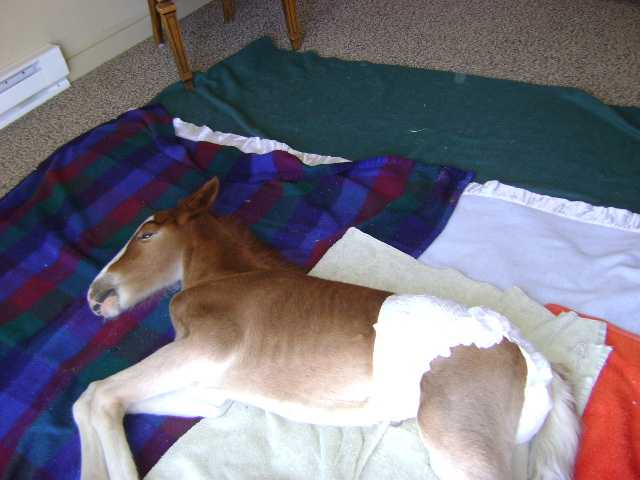
And a few days later he joined up with other orphan foals at the project.

You can view additional images plus some video clips on YouTube by clicking here. Note: The corral panel suggestion is quite practical in similar circumstances on other types of terrain, particularly when a trailer can be brought in close.
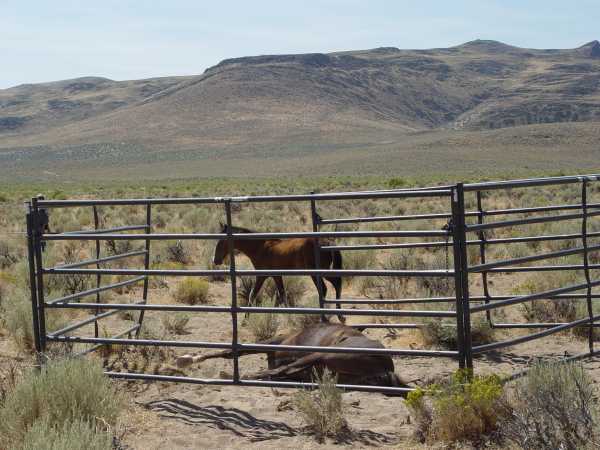
In the "MASH" tent.
|
This material is intended for the use of the Technical Large Animal Emergency Rescue (TLAER) Facebook Group. TLAER is a trademark of Technical Large Animal Emergency Rescue. |
